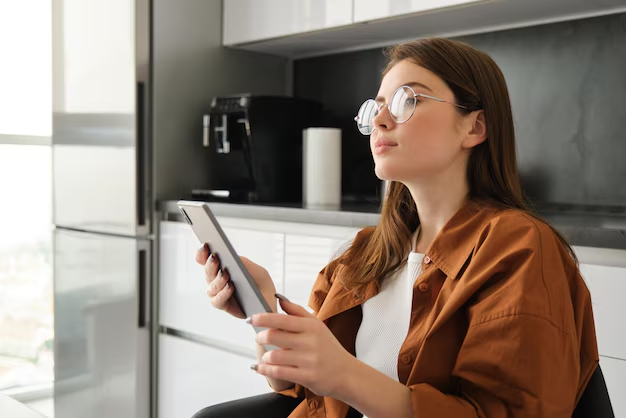How to Master the Temperature Settings on Your LG Refrigerator for Optimal Performance
There’s nothing quite as frustrating as food spoiling too soon or beverages freezing unexpectedly inside your refrigerator. If you own an LG refrigerator and find yourself constantly adjusting its temperature, you’re not alone. Ensuring your LG appliance is at the right temperature can keep your food fresh longer and improve energy efficiency. This guide will walk you through everything you need to know about adjusting the temperature on your LG refrigerator, offering practical tips and insights to enhance your user experience.
Understanding LG Refrigerator Temperature Settings
The Importance of Correct Refrigerator Temperature
Why is setting the right temperature so crucial? The primary purpose of a refrigerator is to preserve food by slowing down bacterial growth. The temperature sweet spot is essential to avoid both spoiling and freezing.
- Optimal Range: For most refrigerators, including LG models, the ideal temperature range is between 37°F and 40°F for the fridge compartment and 0°F for the freezer.
- Energy Efficiency: Proper settings can prevent overworking your appliance, saving on electricity bills.
- Food Safety: Maintaining correct temperatures reduces the risk of foodborne illnesses.
Getting Acquainted with Your LG Refrigerator's Controls
LG refrigerators may feature different control systems, from digital touch panels to manual dials. Understanding these controls is the first step in temperature adjustment.
Digital Controls
- Touch Pans: Often located inside the fridge or on the door, these panels let you adjust settings with the touch of a button.
- Digital Display: This gives you an immediate view of the current settings.
Manual Dials
- Older or Basic Models: Might come with a dial inside the refrigerator and freezer compartments, typically labeled 1 through 5 or 1 through 7.
Adjusting Temperature on Your LG Refrigerator
Step-by-Step Guide for Digital Controls
Locate the Control Panel: Usually found at the top or on the inside of the door. Make sure your refrigerator is plugged in and powered on.
Setting the Fridge Temperature:
- Press the button labeled "Fridge" or similar until you reach the desired setting (most digital settings display in °F).
- Allow 24 hours for the temperature to stabilize after any adjustment.
Setting the Freezer Temperature:
- Similarly, press "Freezer" to adjust the freezer settings.
- Check after 24 hours to ensure items are appropriately frozen.
Smart Functions: Some LG models feature smart functions. Use the LG SmartThinQ app to control settings remotely, providing flexibility in maintaining optimal conditions.
Adjusting with Manual Dials
Locate the Dial Inside: Look inside the fridge and freezer. The fridge dial is often positioned along the side or back.
Dial Indicators: Turn the dial to the middle setting. This typically corresponds to the recommended 37°F for the fridge.
Fine-Tuning: Adjust incrementally. Keep in mind that lower numbers generally mean warmer settings, while higher numbers make it colder.
Things to Avoid When Making Adjustments
- Frequent Changes: Constantly changing settings can lead to inefficiency and energy waste.
- Overloading the Fridge: Ensure air can circulate around food items, which helps maintain even temperatures.
Troubleshooting Temperature Issues
Sometimes, despite your best efforts, your refrigerator might not cooperate. Let’s explore common issues and their solutions:
Inconsistent Cooling: If certain areas are colder or warmer, rearrange items blocking vents. Make sure nothing is pushed against the back wall.
Freezer Frosting: If your freezer is frosting over and it's not due to setting adjustments, ensure the door seals are clean and functional.
Frequent Cycling: If the compressor seems to run constantly, it might indicate a problem with the door seal or temperature sensor. Check for gaps or damage in seals.
Practical Maintenance Tips
- Regular Cleaning: Wipe seals and surfaces to prevent mold and ensure efficient door operation.
- Proper Placement: Keep your refrigerator in a well-ventilated area, away from direct sunlight and heat sources.
Summary of Key Steps to Adjust LG Refrigerator Temperature
Keep these points in mind for optimal refrigerator performance:
🔹 Optimal Temperature: 37°F for the refrigerator, 0°F for the freezer. 🔹 Use Digital Controls: Utilize the touch panel for precise settings. 🔹 Manual Adjustments: Use dial settings if your model features them. 🔹 Allow Time: After adjustments, give 24 hours for temperatures to stabilize. 🔹 Check Seals and Placement: Prevent common issues by regular checking.
Benefits of Proper Temperature Management
When your LG refrigerator is correctly set and maintained, you can enjoy several benefits:
- Extended Shelf Life: Longer-lasting freshness for fruits, veggies, and dairy products.
- Cost Efficiency: Lower energy bills thanks to efficient operation.
- Peace of Mind: Enhanced safety from food spoilage and reduced growth of bacteria.
These simple yet effective strategies can make a significant difference in how long your fresh produce lasts and how efficiently your refrigerator runs. Understanding and employing the correct temperature settings not only ensure food safety but also enhance your appliance’s performance. Implementing these practices helps in maximizing the lifespan of your LG refrigerator while maintaining the freshness of your food.
